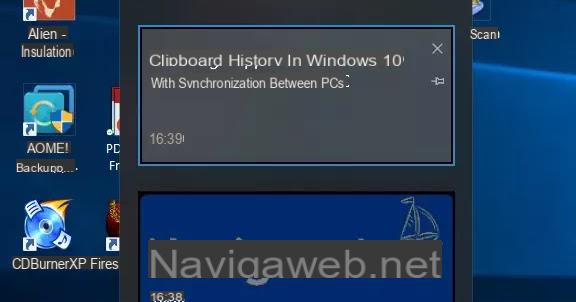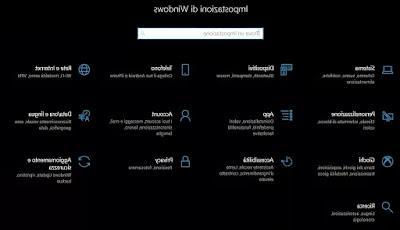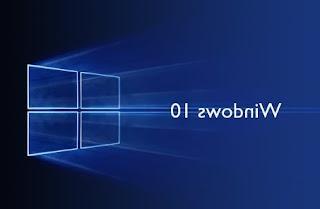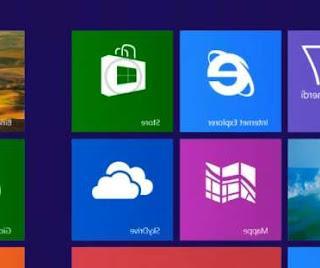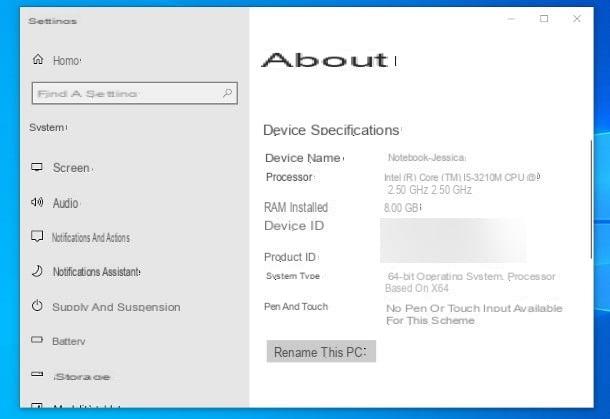 In all previous versions of Windows it was possible to change the font, that is the type of character in which the various menus and windows of the operating system are written. I'm not talking about the writing fonts on a document, but the type of font with which the Windows texts are written, that is, icons, window titles, the Start menu, settings and everything else.
In all previous versions of Windows it was possible to change the font, that is the type of character in which the various menus and windows of the operating system are written. I'm not talking about the writing fonts on a document, but the type of font with which the Windows texts are written, that is, icons, window titles, the Start menu, settings and everything else.From XP, through Windows 7 and up to Windows 8.1, you can press the right mouse button on the desktop background to open the screen customization settings, where there are also options to choose the font type.
We have described this procedure and some support programs in the guide for change fonts, colors and buttons on windows and on menu bars in Windows.
In Windows 10, however, the typical screen customization menu has been replaced with a simpler basic settings screen, which however lacks a few things including the choice of font.
To change menu and window fonts in Windows 10 it is therefore necessary to follow a different path.
To be precise, it is necessary (but read to the end before doing so) to change the font in a specific key in the Windows 10 registry.
- Press Windows-R keys together, write regedit, press Enter.
- From the folders on the left, open the following path:
HKEY_LOCAL_MACHINESOFTWAREMicrosoftWindows NTCurrentVersionFontSubstitutes
and change, on the right side, the value "Segoe UI" = "Tahoma" (I put Tahoma and it is the type of font I chose, but you can also use another one).
If this key does not exist, you need to create it new as a string value.
To make sure it works, make it easier, open a new text document and write on it:
Windows Registry Editor Version 5.00 [HKEY_LOCAL_MACHINESOFTWAREMicrosoftWindows NTCurrentVersionFonts] "Segoe UI (TrueType)" = "" "Segoe UI Bold (TrueType)" = "" "Segoe UI Italic (TrueType)" = "" Segoe UI Bold (TrueType) " = "" [HKEY_LOCAL_MACHINESOFTWAREMicrosoftWindows NTCurrentVersionFontSubstitutes] "Segoe UI" = "Tahoma" Save the file with the name change-font.reg (you need to change the file extension from .txt to .reg.
After saving it, double click on it.
The changes are applied by restarting the computer.
To restore the default font, do the same thing with this content: Windows Registry Editor Version 5.00
[HKEY_LOCAL_MACHINESOFTWAREMicrosoftWindows NTCurrentVersionFonts] "Segoe UI (TrueType)" = "segoeui.ttf" "Segoe UI Black (TrueType)" = "seguibl.ttf" "Segoe UI Black Italic (TrueType)" = "Seguibli.ttf (TrueType) "=" segoeuib.ttf "" Segoe UI Bold Italic (TrueType) "=" segoeuiz.ttf "" Segoe UI Historic (TrueType) "=" seguihis.ttf "" Segoe UI Italic (TrueType) "=" segoeuii .ttf "" Segoe UI Light (TrueType) "=" segoeuil.ttf "" Segoe UI Light Italic (TrueType) "=" seguili.ttf "" Segoe UI Semibold (TrueType) "=" seguisb.ttf "" Segoe UI Semibold Italic (TrueType) "=" seguisbi.ttf "" Segoe UI Semilight (TrueType) "=" segoeuisl.ttf "" Segoe UI Semilight Italic (TrueType) "=" seguisli.ttf "[HKEY_LOCAL_MACHINESOFTWAREMicrosoftWindows NTCurrentVersion]"
If all of this is complicated or if it doesn't work for some reason, changing the font type of Windows 10 menus and windows with messages it can be done more easily by using the small program Winaero Tweaker, one of those programs to tweak the system with "tweaks" that works very well and is simple.
In Winaero Twekaer there are two menus under Advanced Appearance Settings, to change font of icons, menus, messages, window titles, system and status bar (it also changes on the address bar of Chrome and other browsers).
You can also choose not to change the font and make it bold or italic if you prefer.
In case of wrong changes, Winaero can be used to return to the previous situation, using the Reset Advanced Appearance option.








